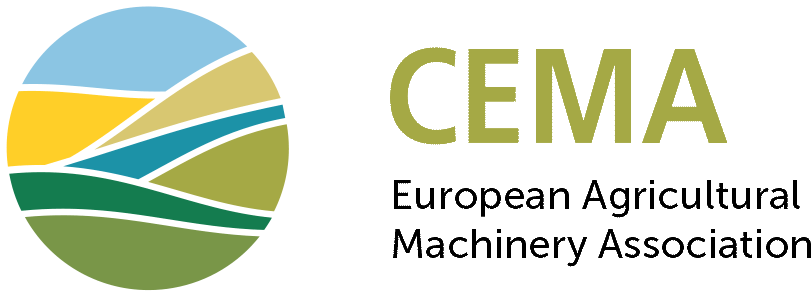Joint Statement by the European non-road mobile machinery industry on the Cyber-Resilience Act
Transition period for NRMM must be longer to allow redesign, testing and compliance

The European manufacturers of non-road mobile machinery (NRMM) represented by CECE, construction equipment, CEMA, agricultural equipment, FEM, material handling equipment call for a longer transition period in the application of the Cyber Resilience Act (CRA).
Indeed, since the Commission proposal, urgency by policymakers to close any gap prone to cyber-attacks is pushing towards unrealistic implementation timelines. The current political consensus of 36-40 months barely allows to develop the necessary standards and related certification of critical products and components. However, such a timeline is simply impossible to keep for the integration of thousands of such components into highly complex machinery, like excavators, tractors or industrial trucks and cranes. This is why, the NRMM industry is calling for an additional transition period of at least 24 months before this Regulation applies.
Non-road mobile machines contain integrated sets of electronic control units, which communicate with each other through an internal communication network to ensure proper functioning. Compliance with the CRA will entail numerous complex modifications to NRMM, not just on the software but also on the hardware, therefore impacting the entire architecture of the machinery. A product upgrade for the non-road mobile machinery sector takes normally 3 to 5 years, and the lifecycle of a particular product platform could be 20 years. The current scope would also mean that allsensors, actuators and controllers currently deployed in the machine for internal functions, with low cyber-risk, must be checked as well.
As some of these significant changes will inevitably affect the different functions and related health and safety compliance, the new CRA-related obligations trigger a complete redesign and re-homologation of the machinery. For NRMM to be placed on the market, this would imply a new conformity assessment under the Machinery Regulation and a new national or European type approval.
This is impossible to manage by manufacturers, all the more since a variety of new regulatory and technical requirements are to be implemented in the coming years as a result of the intense legislative activity of the past few years (e.g. Exhaust Emissions from NRMM, Machinery Regulation, AI, data, etc.). The impact is also on machinery users and clients alike, considering that NRMM are important enablers for key economic sectors of Europe like agriculture, construction, logistics, gardening, landscaping and forestry.
The complexity of implementing radical changes in NRMM design is something that is acknowledged. This is notably the case in the recent Commission proposal for a regulation on ‘NRMM road circulation’ (COM/2023/178), granting 8 years to the NRMM industry to prepare for a full re-approval of all machinery types. The CRA, on the other hand, did not assess the impact of the proposed changes on complex machinery.
In conclusion therefore, we strongly believe that an adequate compromise must be found within the legislative debate to introduce this additional extended transition period of at least 24 months. We urge policymakers to hear this call and invite co-legislators to consider the amendment proposal here below as the most adequate legal formulation to modify the current legislative proposal.
|
Article 55 – paragraph 4 (new) |
|
|
EC proposal |
NRMM industry proposal |
|
4. By way of derogation, for non-road mobile machinery as defined in Regulation (EU) 2016/1628, and agricultural vehicles as defined in Regulation (EU) 167/2013, the application date referred to in Article 57 is extended by 24 months. |
|
CECE, (www.cece.eu) the Committee for European Construction Equipment, represents the interests of 1,200 construction equipment manufacturers through national trade associations in Europe.
CECE manufacturers generate €40 billion in yearly revenue, export a sizeable part of the production, employ around 300.000 people overall. They invest and innovate continuously to deliver equipment with highest productivity and lowest environmental impact. Efficiency, safety and high-precision technologies are key.
CEMA aisbl (www.cema-agri.org) is the association representing the European agricultural machinery industry. With 11 national member associations, the CEMA network represents both large multinational companies and numerous European SMEs active in this sector.
The industry comprises about 7,000 manufacturers, producing more than 450 different types of machines with an annual turnover of about €40 billion and 150,000 direct employees. CEMA companies produce a large range of machines that cover any activity in the field from seeding to harvesting, as well as equipment for livestock management.
EGMF (https://egmf.org/), the European Garden Machinery industry Federation has been the voice of the garden machinery industry in Europe since 1977. With 30 European corporate members and 7 national associations representing manufacturers for garden, landscaping, forestry and turf maintenance equipment, we are the most powerful network in this sector in Europe. Our members are responsible for employing 120,000 people in the EU, and in 2021 sold over 23 million units on the European Market.
FEM (www.fem-eur.com), the European Materials Handling Federation, represents the European manufacturers of materials handling, lifting and storage equipment. FEM speaks for 13 members representing more than 1,000 companies employing 160,000 people directly and with an annual turnover of more than €60 billion.








